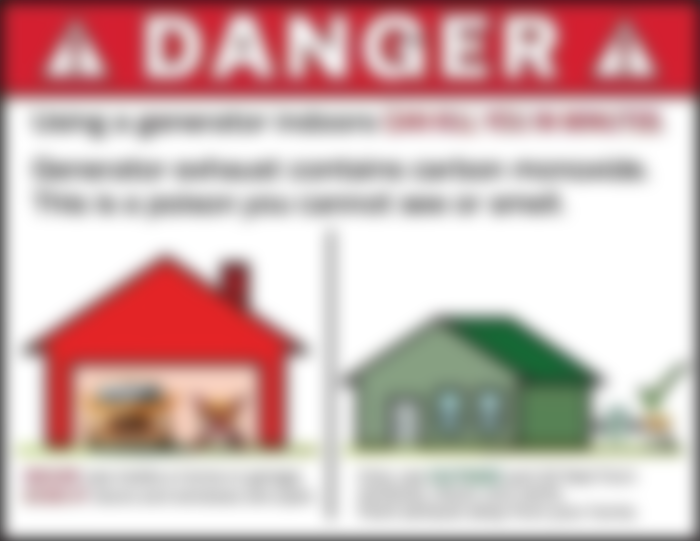In recent weeks, our country has gone through many trials. Volcanic eruptions, pandemics, and hurricanes are just some of the hardships people experience. It is sad to think but we stay strong and stay positive in life.
Our province is one of the areas that has experienced severe disasters so it is inevitable that there will be problems with the power lines. That is why people make ways just to be organized and facilitate our daily activities. Most are accustomed to using a generator. Most people can't deny using new technology. Based on the report of the Province of Albay to the DOH - Bicol CHD at present, there are eight suspected cases of CO poisoning. What exactly is this? How did it happen?

What is carbon monoxide (CO) poisoning and what is its connection to the use of GENSET?
CO poisoning occurs when a person inhales high levels of CO. It enters the bloodstream and replaces oxygen in the blood which can cause serious illness or death. CO is a poison that has no odor or taste so it is not known if a person inhales it. Generator sets used during power outages are one of the sources of carbon monoxide. It can be fatal depending on the concentration of carbon monoxide in the surroundings (higher, more dangerous), the duration of exposure to its smoke (longer, more dangerous), and the health of the person inhaling it (if sick is more dangerous).
Symptoms of Carbon Monoxide (CO) Poisoning When a person is exposed to high levels of Carbon Monoxide in an area where ventilation is not good, they may experience the following symptoms:
Headache.
Difficulty breathing
Changes in behavior, habits, and thinking.
Easy fatigue.
Shortness of breath or a general feeling of sickness.
Poisoning.
Laziness or difficulty walking.
Vision problems.
Confusion or impaired judgment.
Vomiting.
Breathing speed.
Chest pain and rapid or abnormal heartbeat
These symptoms include having exposure to carbon monoxide and when many people have the same symptoms are possible indications of carbon monoxide poisoning.
Infants, pregnant women, the elderly, and those with diseases such as anemia, respiratory illness, or heart disease are more at risk of Carbon Monoxide (CO) poisoning.
Things to do if you experience carbon monoxide poisoning:
Get help right away. Call emergency hotlines.
Take the person inhaling CO to a place with clean air, remove it from the area with CO.
If the person inhaling faints, check for damage before moving.
Switch off the carbon monoxide source if it is safe to do so.
Perform CPR as needed until help arrives.
Upon arrival at the hospital, the patient will be given 100% oxygen. Oxygen delivery depends on the severity of carbon monoxide exposure:
The person experiencing mild poisoning or mild poisoning is given oxygen through a mask.
The person experiencing severe carbon monoxide poisoning needs to be placed in a full-body, high-pressure chamber to provide it with enough oxygen in the body. Portable generators are useful when there is no electricity.
Portable generators are useful when there is no electricity. However, we must be aware of the possible danger of improper use of portable generators. The most common hazards associated with portable generators are carbon monoxide (CO) poisoning, electricity, and fire hazards. To avoid risks here are some important instructions:
Generators must operate in areas with good airflow outside the house and away from all doors, windows, and vents.
Never use a generator in an attached garage, even if the door is open.
Turn off the generators and let cool before refueling (applying gas, diesel, hydrogen, or others). Never refuel the generator while it is running.
Store the fuel (gas, diesel, hydrogen, or other) in the generator in the container for that purpose and the label is correct in its use. Keep containers outside of used living rooms.
Remember: It is still safe to have enough knowledge.
